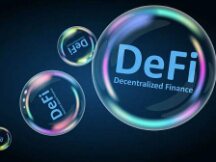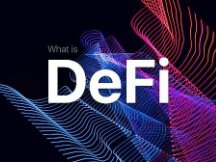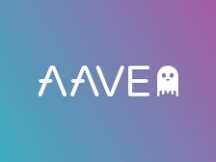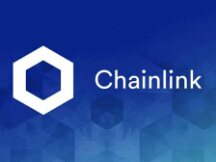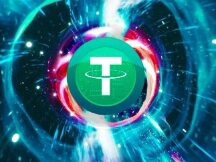Multicoin Founder: An Overview of DeFi Cost Improvements and Opportunities
Interest rates are an important indicator of the composition and value of a financial asset. All equity financing includes interest rates and loans, student loans, business loans, government loans and even where goods and services are affected.
Businesses can avoid interest rate risk by borrowing at a fixed rate. Mortgages are the most common type of loan in the industry. According to the notional white paper, "In 2018, the base value of US debt and business loans will be $ 15.3 trillion, up from 88% of total debt."
However, the interest rate on a fixed loan may not be satisfied with the terms of the loan (meaning that interest rates will fall as the market develops) and may trade risks with others. payment changes. . Lenders who hold mortgage rates will need to hedge against this risk, expecting interest rates to rise across the business.
Currently, the DeFi market is generally limited to low income loans. Two of the largest loan agreements, Compound and Aave, both support the float price. While these products work well for the target audience to generate significant income, they are not suitable for businesses or new banks that need estimates. As DeFi supports multiple scenarios, the ability to close interest rates will become an important technology.
Exchange rate interest (also called exchange rate interest) is the most popular form of interest rate derivatives. The daily volume of the foreign exchange interest market is $ 6.5 trillion, which represents more than 80% of the global volume of derivatives trading. Exchange interest has many uses.
(1) Borrowers use interest rates to adjust their interest rates.
(2) Professionals can benefit from the use of exchange rates.
(3) Managers and creditors use the exchange rate to control risk.
Now, several groups have developed DeFi securities lending and interest rate products, and this article discusses contracts in detail.
Interest rate in the cryptocurrency market
Most DeFi loans now have different interest rates. There are $ 19 billion in good loans for our major loan commitments: Aave-US $ 7.9 billion, Compound-US $ 4.9 billion, and MakerDAO-US $ 6.3 billion.

As shown in the picture, the Compound and MakerDAO loans are different, and as of July 2021, only about 1.5% of the good loans in the big five companies of Aave (DAI, GUSD), SUSD, TUSD, USDC) have "stable" interest rates. .
There are now stable online platforms with local DeFi value, such as YieldProtocol and NotionalFinance. Notional has $ 12 million for TVL and Yield is currently developing V2. It is therefore true that the DeFi debt consolidation business is a more mature industry than credit rates. However, we expect fixed rate loans to outperform unsecured loans as DeFi will keep the financial market strength in place.
Many financial institutions and new banks have asked us to explore DeFi, and one of the main concerns we've heard from them is that mortgage interest rates are high. The transition is not good.
So, even if you like prevention and risk management, the mortgage business is not the most profitable.

The image above is an example of most of DeFi's Apple USDC loans a few years ago.
For large companies borrowing from DeFi, interest rates should be higher and more stable. A company that borrows $ 100 million from a 2% interest rate chain cannot accept interest rates that skyrocket to 20% a week later. Companies want to borrow money at a fixed rate or prevent access to the difference between the impact of Compound and Aave.
With the growth of cryptocurrencies, we expect DAO lending activity to continue to grow. As the industry grows, debt consolidation will become a major investment and DAOs will no longer be special.
We anticipate that more DAOs will seek financial investments, such as risk management of large contract DeFi and NFT platforms. In the near future, SUSHISwap DAO borrows money from a floating loan agreement and rewrites the contract stating that “10% of the proceeds of the xSUSHI contract will be used to pay off the loans”. You can avoid the risk of a floating contract, but you can avoid the risk by using a flower exchange.
With the introduction of new products, mortgage and fixed interest rate plans can become very popular.
Overview of Fixed Rate Loans and Interest Derivatives
There are many DeFi products that allow you to create stable mortgage rates and interest rates, each with their own advantages and disadvantages.
Daim zero coupon bond (ZCB)
In these models, borrowers invest in smart contracts and borrow yDAI to create contracts (for example, yDAI-2021-12-31). Then if you pay for the special day, yDAI is sold at the open store. The actual interest rate paid by the lender is determined by the term of the loan and the discount on the sale of yToken in the open market. For example, Alice can offer 100 yDAI support for 200 USD ETH, then sell 100 yDAI to Bob in exchange for 97 DAI. So, when the contract expired, Bob borrowed $ 97 and received $ 100.
There are many ways to use this method, however
Example 1) Generally negotiated AMM or CLOB contract.
2) Actual payment and cash
3) Liquidation control.
Currently, Hifi, UMA, Notional and Yield Protocol use the standard zero debit card.
Advantages: 1. Simple structure, 2. Support for a stable price, 3. More trading products make the loan more secure, 4. The profit curve can be compactly organized. By bearing the risk of fraud, the value of regular tokens can be obtained clearly.
Disadvantages: 1. Diversification of liquidity to maturity 2. Requiring confidence in mortgage-to-debt ratio 3. Need for security deposit in new smart bond system 4. Low investment efficiency for speculators and the liquidity department 5.. . liquidation risks.
stripping
In these models, users can deposit store tokens (for example, Compound's cUSDC) into a YieldStriping smart card. The process then divides the cUSDC into two tokens. One is the Main Token (PT) and the other is the Profit Token (YT).
Depositors can sell YT in advance in exchange for cash, adjusting the interest rates to the term of the contract. For example, the compound interest rate is currently 10%, and if Alice deposits $ 100, her annual income (if the compound interest rate stays the same for 12 months) will then be $ 10. This can change the unpredictable $ 10 YT to $ 8 cash today.
Swivel, Pendle, Tempus, Element, Sense and APWine use the Yield Stripping model.
Advantages: 1. Stable interest rate available 2. Long term speculation possible with interest leverage 3. No liquidation or forecasting required as the principal is deposits first and implicitly leveraged 4 Effectiveness of improved investment for 5 guaranteed speculators available at Compound, Aave. repeat.
Disadvantages: 1. Cannot choose short sale 2. Capital efficiency of interest is low because all finance must be paid in advance 3. Limited to principal and interest rate (No. 4. It There is a spread between borrowing and lending rates due to interest rates and Aave Perfect hedging unauthorized swaps.
stable report
As a reliable lender, Aave has a difference based on an agreement. The key idea is that borrowers have the option of choosing "fixed interest rates" when opening a new mortgage. His interest rate starts to be higher (usually higher) than the difference in what he can borrow.
For example, USDC has a low lending rate of 5.4% and a fixed lending rate of 11.9%. The interest rate differential on ETH is 0.25% and the fixed interest rate is 3.3%. This drawback ensures that the contract handles settlement before the "bid return" (eg, exchanging a fixed interest rate on an existing loan).
Unlike different loan rates, in most markets the supply of fixed rate loans does not change when new loans, new deposits, and fresh water enter the Aave market.
The AAVE currently uses this model.
Benefits: 1. Based on a trusted agreement in the Ethereum ecosystem, AAVE has significant trade costs and sufficient capacity to support more secure contracts than other models. It cannot be guaranteed as a very specialized market) 3. It has high usage in the token market with low transaction costs, insufficient water and high exchange rates.
Cons: 1. Uncertain interest rates 2. Applicable only to borrowers, not borrowers 3. Consumer interest rates will be “rebalanced” in bad deals 4. Stable interest rates are above float value.
Contract for difference (CFD) and perpetual interest agreement
In this model, users place a collateral sheet in a margin account and select a long or short flower. This model is similar to perpetual contracts between FTX and BitMEX. Payment will be made at the lowest interest rate specified in the contract and at the prevailing interest rate as specified in the contract.
These products offer leverage and therefore require a liquidation engine. If the trader's interest rate is lower than the maintain, the system closes the Perpetual Contract AMM (or CLOB) position.
Currently, Strips Finance and YieldSwap use this model.
Pros: 1. Clear short-term interest rates 2. Non-electronic interest rates (eg BTC perp to LIBOR or FTX exchange ratio) 3. High operating capital before principal as it does not require a token , it also allows for two-way leverage 4 Due to the constant status of the contract, liquidity is concentrated.
Advantages: 1. Reliability of interest rates is required. 2. Must be completed due to energy. 3. A separate contract is required to establish the cost of the loan from Compound / Aave in order to establish good security.
Perpetual contract at DeFi interest rate
The simplicity of combining perpetual contracts allows researchers and investors to negotiate theoretical interest rates (e.g. USDC blended interest rate, LIBOR rate, government, income, FTX financial rate, ETH rent). These contracts are eternal in nature and do not expire.
Therefore, no liquid time fragmentation. Professionals increase revenue streams, benefit hedgers and other users who really need them.
Consider Alice borrowing XYZ tokens from Aave for her business. He can use the contract interest rate to permanently buy the aave value of the XYZ tokens, preventing it when the borrowing price rises and the profitability of the trading strategy erodes.
Perpetual contracts aren't perfect, but they do offer investors the opportunity to venture out to bid on interest rates.
In our previous article on The Foundation of DeFi Derivatives, we concluded that perpetual contracts have the potential to be the weapon of choice for DeFi derivatives. We believe that it can also adapt to exchange rates. Perpetual contracts aren't perfect, but their weaknesses are manageable.
The fixed interest rate model is safe for mortgages based on capital held in Aave, but reduces utility bills because it does not allow two options to affect interest rates. Although ZCB can get a stable loan, it is not able to make capital intensive investments, so its potential is low.
The export of interest in the contract in DeFi has not yet reached its value, but we see a great opportunity. Perpetual contracts are already a big market for cryptocurrencies, and we expect them to apply to CeFi and Defi for the same price.

Scan QR code with WeChat


